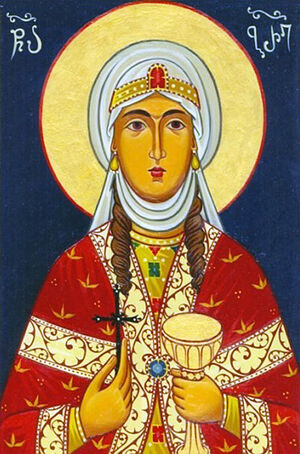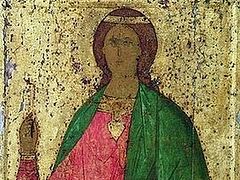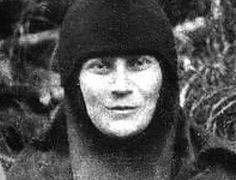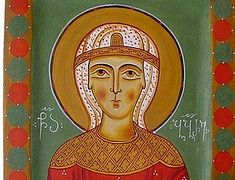 On December 17, Georgia holds one of its most popular celebrations called “Barbaroba.” Every household is busy making Lobianis, a flatbread with beans, this day’s traditional Lenten dish. There are many beliefs associated with this feast.
On December 17, Georgia holds one of its most popular celebrations called “Barbaroba.” Every household is busy making Lobianis, a flatbread with beans, this day’s traditional Lenten dish. There are many beliefs associated with this feast.
Special attention on this day is paid to the “mekvle,” which translates as someone who sets the course, or the “first-foot.” It is a man or a boy who steps in as the first guest of the household. He is believed to bring with him prosperity and luck. As a rule, the Mekvle brings something sweet and wishes all family members long life and prosperity. Naturally, he is immediately invited to the table set with Lenten dishes. In today’s Georgia, despite the challenges of everyday life, the onslaught of Jehovah’s witnesses cruising around and so on, more and more people begin to lead the lifestyle of conscious Orthodox Christians.
Needless to say, all city churches are packed on this day. Even if the service is over, the people usually still keep coming to seek St. Barbara’s intercession.
Tbilisi has several churches dedicated to St. Barbara.
The media often keeps writing about recent new miracles that happened due to St. Barbara’s intercession. Here, for example, what Fr. Elguja (Losaberidze), the rector of St. Barbara's Church on Bogdan Khmelnitsky Street, relates on the pages of Sarke magazine:
“A woman once asked me: 'Give me the keys to the church. They will help my child if he puts them in his mouth.’” I've never heard anything like that. It must be some folk belief. This woman was our parishioner and had long prayed to the saint for a miracle. Everyone knows that St. Barbara is the patron saint of children. I could not say “no” to the exhausted mother and gave her what she was asking for. She later came to me weeping for joy. Her child, dumb from birth, began to speak...”
In 1999, another church was dedicated to St. Barbara in Tbilisi. Prior to that, its future rector Fr. Kakhaber (Natenadze) and two of his friends had the same dream that there should be a church built on that site. The Great Martyr appeared to Fr. Kakhaber in a dream exactly as she is depicted in icons, placed the Chalice on his head, and promised her help with the construction.
Sure enough, the church was built in record time—six months. Sixteen-year-old Khatia Mtivlishvili, whose wondrous death attracted everyone’s attention, is buried next to the church. For a time, everyone in town was talking about nothing but St. Barbara, Khatia and the stone. Some saw in her death the punishment for some hidden sin, others expressed pity for the girl, and then there were some who simply knowingly tut-tutted: Well, the world is full of surprises!
Father Kakhaber recounted this astonishing incident in the very same Sarke magazine:
"My parishioners and I were going to go to the Kvatakhevi monastery. Khatia, a devout Christian and a well-educated girl, organized the trip. For some reason, she was in a great hurry to get there. Before we left, she told me that she saw St. Barbara in a dream, and the saint pressed her to her heart promising that she will take her quite soon. Khatia seemingly got very excited about it and asked, ‘Can it truly happen soon?’
“We arrived at the Kvatakhevi monastery, served a prayer service there, and had a meal afterwards. There was a cliff nearby. Khatia insisted that we go up there and take pictures. Suddenly a rock broke off the cliff and rushed downhill toward the children. Everyone scattered in all directions. Khatia was the only one left standing, shielding her face with her hands. The stone hit her in the head and she died instantly.
“It should be noted that Khatia departed to the Lord at that same age of sixteen, just like the Great Martyr Barbara.
“Some amazing things began to happen at her funeral. During the Panikhida, everyone saw how the images of Jesus Christ, the Most Holy Mother of God, and St. Barbara miraculously appeared on the burial shroud.
“The girl lay in the coffin as if alive. Her hands were warm and soft, and her limbs retained a flexibility uncharacteristic of the deceased. Khatia was the pure vessel of God. That’s why God took her so early, so that the poison of modern life wouldn’t spoil her.”
Maya, Khatia's mother, told reporters the following:
"My daughter was a straight-A student, and I never had any problem raising her. From the day the church was opened, she spent all her free time there. She often prayed at night, even though I was against such zeal, considering it unnecessary. I used to tell her, out of worry over her simple-mindedness and trust of people: “Be more cunning, you’ll need it in life.” I wasn’t a believer. Khatia's passing from this life made me look at things in a different light.
“Strange as it may sound, this tragedy was replaced by joy. I simply feel that Khatia is always near me. I, too, witnessed the miracles that Father Kakhaber spoke about. I can only add that sometimes our house is filled with the fragrance of incense all on its own. I know that it is Khatia, and her guardian angel, visiting me. God has clearly shown to all of us that eternal life does exist.”
Over time, the rumors and discussions about this incident settled. Life goes on. As for the popularity of St. Barbara, every once and a while you can hear a story about a new miracle associated with her.
That’s why a girl born on December 17 will surely be named Barbara—a name that during the years of godless power was considered hopelessly old-fashioned.



